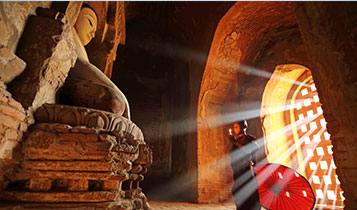
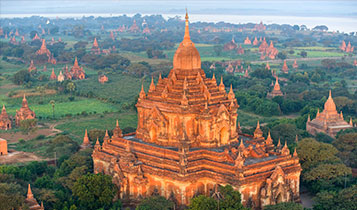
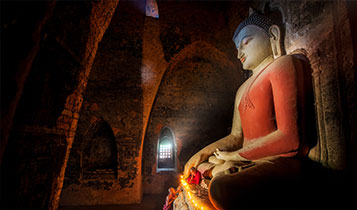
Bagan, located on the banks of the Ayeyarwady (Irrawaddy) River, is home to the largest and densest concentration of Buddhist temples, pagodas, stupas and ruins in the world with many dating from the 11th and 12th centuries. The shape and construction of each building is highly significant in Buddhism with each component part taking on spiritual meaning.
Bagan's holiest temple, built by the third king, Kyan-zit-tha in 1091. Ananda comes from the Pali word "anantapannya", which means "boundless wisdom". The temple houses four Buddhas facing the cardinal directions, which represent the four Buddhas who have attained Nirvana. The fifth, Maitreya, is yet to appear. This is the most important temple in all of Bagan. Location: Left side on the southern stretch of the Bagan-Nyaung Oo Rd. just before the road heads to Tharaba Gate of Old Bagan.
This is the "sunset temple", where foreign and Burmese tourists alike gather every evening to view the spectacular Bagan sunset.
This gourd-stupaed golden pagoda is the first and prototype monument (including for the iconic Shwedagon Pagoda of Yangon) built in Myanmar style in 1087. Location: Heading south, right side on the northern stretch of the Bagan-Nyaung Rd. after passing the bus station. A long covered walkway with souvenir stalls starts from the road to the compound.
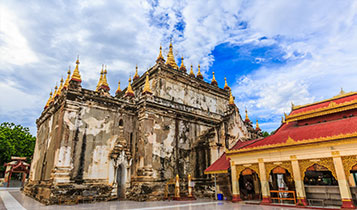
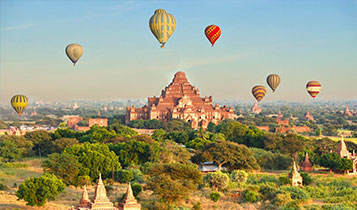
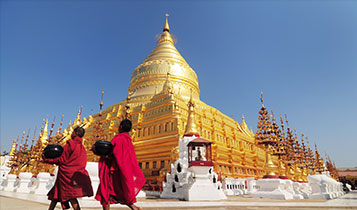
The tallest pagoda measuring 66 meters built in the 12th century. Location: Left side after entering the Tharaba Gate of Old Bagan, the second road.
Commissioned by King Alaunsithu in 1131, one of the most intact temples in the site that needs a little less of imagination to appreciate Bagan's olden days. Nearby the Shwe-San-Daw pagoda, this temple is just as good for watching the sunset and far less crowded; a great alternative for an astounding view. Location: This temple sits closely in front of Thatbyinnyu Temple.
This complex has some attached drama into it. It was built by King Manuhar from the nearby kingdom of Thaton, a POW of King Anawratha. He sold his jewelry and poured out his pent up sentiments by constructing this temple. Location: The last major Temple at the southern end of Myinkaba Village along Bagan-Chauk Rd. and marked by a towering free-standing column.
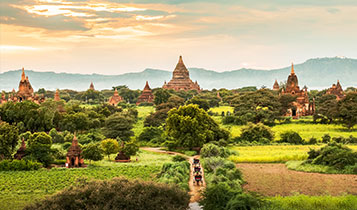
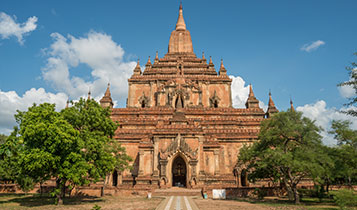
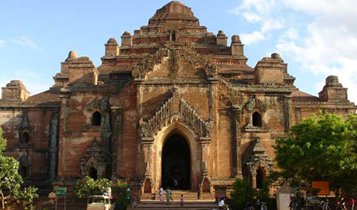
Another complex with an attached drama, this was commissioned by King Narathu to atone for his sins of assassinating his father, brother, and wife. The eccentricity of this king is reflected in the building's finely set brickwork and its unfinished construction (work abandoned after he himself was assassinated). These generate so many riddles and mysteries that lead to be known as ghost haunted temple for some inhabitants. From estimates, there were roughly 6 million pieces of bricks used in the construction of this temple.
Nearby Dhamma Yangyi, but even more impressive since of the same architectural style but even better preserved. The decreasing six terraces and the main structure resemble the plan of a pyramidal shape. It was the copy of Ananda temple, and has two corridors inside constructed in a plan in perfect Greek cross. But the interior passage has been closed by bricks for unknown reason. The masonry job of this temple is so remarkable that even a needle can't penetrate between two bricks. Besides, the complicated architectural style of this temple creates the arguments on the number of floors and on the completion of the building. Location: A kilometer southeast off the southern stretch of Anawratha Rd.
This durian-shaped stupaed temple was modeled after Bodh Gaya in India. It has also murals depicting scenes from the Jataka tales. But the best feature in this temple is the rooftop view of the surrounding area even if it's not as high and acrophobic as those in its category. Access is guided by the caretaker who will reveal his intention after such a wonderful tour by soliciting appreciation for his sand paintings. Location: Better accessed through Bagan-Nyaung Oo Rd. although Anawratha Rd. is nearer but remote, just north of the dry creek.
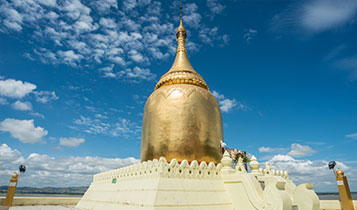
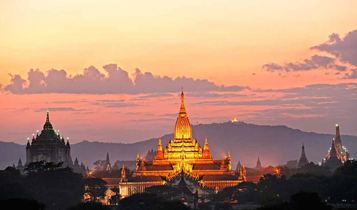
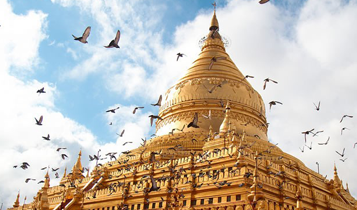
A fusion of Myanmarese and Indian styles, this temple has a beautiful courtyard with a medium-sized stupa and interesting bell hangers. Location: Inside Old Bagan, just north of the Archeological Museum.
This lone golden gourd-shaped structure is sitting on a complex temple by the river. Location: Inside Old Bagan, a north bound road leading to it branches out from the main road as it turns south, the stupa is visible from the outside and not necessary to explore the temple complex.
Shwezigon Pagoda on the North bank of Nyaung U, this is one of the most important pagodas in all of Myanmar that was built 11th century and served as the original model for the pagoda of the same name in Yangon.
Kyan Ma Ba- small pagoda across the road (south) from magnificent Gawdaw Palin - the pagoda itself is not much.
Along the Bagan-Nyaung Oo Rd. (North of Old Bagan): Bulethi Pagoda, Shwezigon Pagoda, Gubuakgyi Temple @ Wetkyi-In Village, Thagyarhit Temple, Upalithein Ordination Hall, Htilominlo Temple, & Ananda Temple.
Inside Old Bagan: Tharaba Gate, Maha-Bodi Pagoda, Pitakattaik Library, Thantawkyar, Shwegugyi, Thatbyinnyu Temple, Gawdaw Palin Temple, Mimalaung Kyaung Group.
Along Bagan-Chauk Rd (South of Old Bagan): Gubyaukgyi @ Myinkaba Village Temple, Manuhar Temple, Nonpayer Temple, Abeyadana Temple.
East Off Southern Anawratha Rd: Dhamma Yangyi Temple, Sulamani Temple, Meenyeingone Temple, Lawkahteikpan Temple, Shinbinthalyaung Temple, Shwesandaw Pagoda.